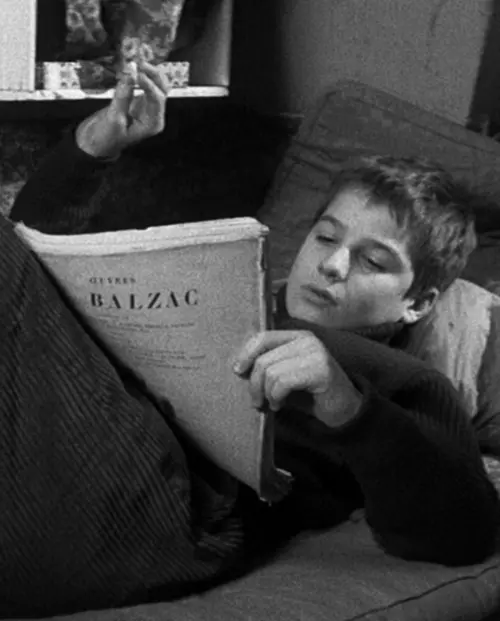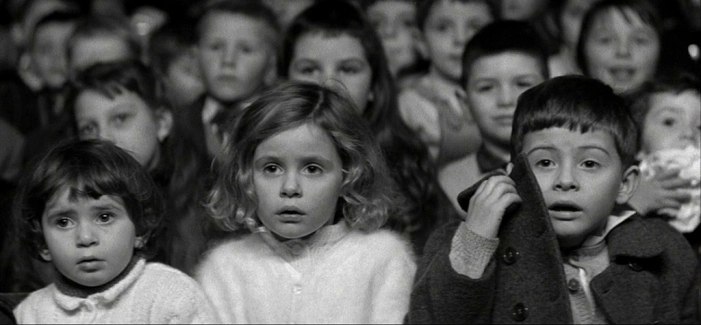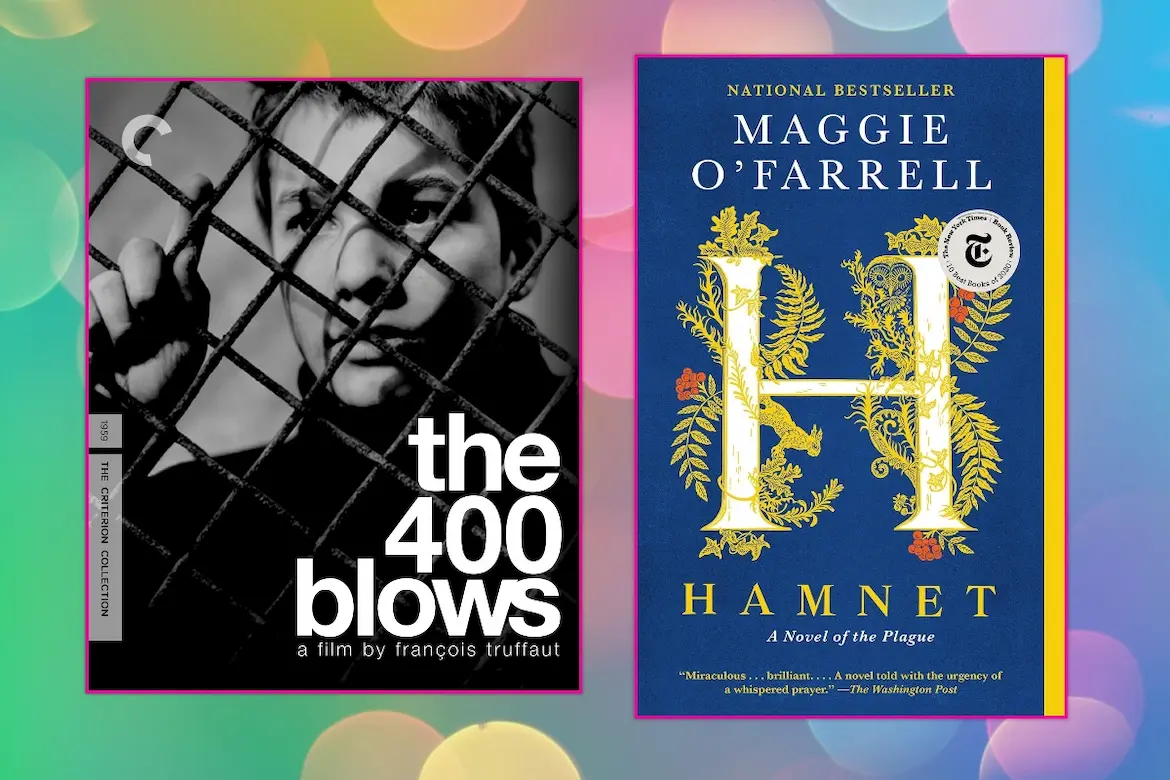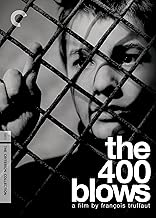In this LitStack Rec, discover the perfect pairing of cinematic brilliance and literary richness with “The 400 Blows” and “Hamnet.” Prepare to be captivated and inspired as these two masterpieces converge to offer an unparalleled experience. Dive into the depths of French New Wave cinema and immerse yourself in the poignancy of Shakespearean storytelling.
You can find and buy the books we recommend at the LitStack Bookshop on our list of LitStack Recs.

In This LitStack Rec:
The 400 Blows, by Francois Truffaut
65 Years Old And As Vital As Ever
2024 marked the 65th anniversary of the release of Francois Truffaut’s The 400 Blows, a film that changed cinema, and on its debut, brought immediate recognition to the then-unknown director. In May, 1959, The 400 Blows won the Grand Prize for Direction at the Cannes Film Festival, when only the year before, Truffaut had been barred from the festival (as a young critic, he’d had the audacity to criticize the decorative flowers on the stage that blocked the audience’s view of the screen).
A Childhood In The Montparnasse District Of Paris
At the center of the film is the character of Antoine Doinel, who along with the actor who plays him, Jean-Pierre Léaud, serve as doubles for Truffaut, whose childhood and youth was the basis for the film. Like Antoine, Truffaut grew up in the Montparnasse district of Paris, had a strained relationship with his mother and the sometimes kind, sometimes cruel, attention of his adoptive father. As Antoine does, Truffaut struggled in school, preferring the cinema, and sneaking into theaters by sneaking in through a side door, and reading Balzac for hours. Antoine is unapologetic, even indifferent in the face of the adults’ criticisms.
“I lie… but only once in a while. At times, if I told the truth they wouldn’t believe me. So I tell lies.”
—Antoine Doinel, in The 400 Blows
Doing Time For Stealing A Typewriter

Like Antoine, at the age of sixteen Truffaut was turned over to the Paris police by his adoptive father, Roland Truffaut, for stealing a typewriter, and was sentenced by the court to serve a term in juvenile detention. At the time, French law gave a father the legal option to hand over authority of a minor boy to the corrections system, until legal age, if demanded. Article 375 as it was called, was eventually abolished, but for Truffaut, the experience was a defining one as what little safety and security he had fell away. The period became the basis for the semi-autobiographical film, and a career that ran until his death in 1984 at the age of 52.
The Camera As Pen
The 400 Blows (Les Quatre cents coups—a French idiom meaning “to raise hell”)—reframed cinematic style and was among the films that gave rise to auteur cinema, or what French New Wave directors would call caméra-stylo (camera-as-pen). This cinematic new wave was a rejection of the films that dominated mainstream in the 1930s and 40s and forged new territory by featuring first-person narratives, marginalized characters and narrators, and a cinematic style that was at once gritty and elevated.
Out of necessity, these auteur filmmakers improvised, using long tracking shots, jump cuts, and documentary-like mannerisms—low-budget techniques that brought fresh portrayals of character and story. The French New Wave resulted in a powerful intersection of style and story that would bring such films such as Eric Rohmer’s The Sign of Leo, and Claude Chabrol’s Le Beau Serge, both released in 1959, Jean-Luc Godard’s Breathless (1960), and Jacque Rivette’s Paris Belongs to Us (1961).

Children Have A Gravity—Flaws And All
The 400 Blows would also establish a fundamental theme in Truffaut’s work and life: his belief in the validity of the childhood point of view, and his longtime advocacy of the social welfare of children. “Most films about children make the child frivolous and the adult serious,” he once said. “Quite the other way around!” And children have a gravity—flaws and all.
As film historian David Melville wrote, “Allowing a
A Strict Diet Of Music, Books And Cinema
At seventeen, after Truffaut completed his sentence at The Observation Center for Minors, he wrote in a school essay, “Three films a day, three books a week and records of great music would be enough to make me happy to the day I die.” In those difficult early years, the strict diet helped the young Truffaut survive: music, books, and the cinema—the films of Jean Vigo (whose L’Atalante, nearly 80 years later, is nearly unmatched in its visual beauty), Jean Renoir, and American film noir.
Decades later, The 400 Blows is still a raw, unfiltered look at how children survive when the adults around them fail—and in Antoine Doinel, a glimpse into what it means to be a child without a safety net.
Read Francois Truffaut’s last interview in the New Yorker.
—Lauren Alwan
Related Titles

Hamnet: A Novel of the Plague, by Maggie O’Farrell
We learned in school that William Shakespeare was married to Anne Hathaway, a woman who was small minded, possibly mentally ill, and more than likely unlovable. That theirs was a loveless marriage, made under duress, and most likely what drove him to stay in London for much of his adult life. Rare is the acknowledgement that we simply do not have enough empirical evidence to draw any solid conclusion as to what Shakespeare’s domestic life was like.
What if the marriage between Anne Hathaway and William Shakespeare was strong, and vital? What if it gave Will the emotional support he needed to leave Stratford and thrive in the cutthroat theater business in London? What if Anne Hathaway was not a small minded, menial person, but a woman of great insight and courage?
If that idea intrigues you, then you must read Hamnet by Maggie O’Farrell.
“A Thing Of Shimmering Wonder”
Hamnet was Shakespeare’s only son, a twin to Judith, baptized in 1585 and buried in 1596 at age 11. This is all we know of the boy. But out of this scant knowledge, Maggie O’Farrell weaves a story that is rich, involving, mind-bending, and beautifully written.

While young Hamnet is a major character in the book, it is his mother, Agnes, who takes center stage. (The woman we know as Anne Hathaway in public documents was called Agnes in writings by her family, and so Maggie O’Farrell calls her Agnes in the book.)
Agnes is the daughter of a well to do landowner and is both admired and feared for her strong will, her lack of convention, and her unusual gifts as a healer, a herbalist, and as someone who can “read” a person by touching their hand. When she declares she wishes to marry “the Latin tutor” who teaches her brothers, someone in whom she senses a great depth, the union is rebuffed as he is known mainly as a lazy ne’re-do-well. So Agnes seduces the young man, gets pregnant, and forces the marriage.
No need to go into expository detail, as fascinating as it is. What is more marvelous is how Ms. Farrell crafts her tale. David Mitchell (author of Cloud Atlas and The Bone Clocks) calls the book, ‘A thing of shimmering wonder’, and I can think of no better way to describe it. Warwickshire of the 1580s comes alive in this novel, but in an intimate, familial way, through the sensitivities of Agnes, and later, young Hamnet.
Shakespeare himself, while a character in the book, is never named, but remains “the Latin tutor” or “the youngest son” or “the beloved father”. The focus of the story stays on the things we don’t know, built on the tiny snatches of what we do, and yet the narrative hangs together so strongly and so cohesively that it is not hard to believe the tale spun in Hamnet is true.
Endurance, Grace, and Conviction
It is not always an easy book to read. The treatment of women, especially women who existed outside of the norm, is maddening to our modern sensitivities (although Agnes would not have understood our angst). Life in England in the late 1500s and early 1600s was not easy to begin with, and bedeviled by the intermittent plague that devastated families and derailed economies. And the death of a child, especially a beloved child, is never easy to witness.
And yet, there is such beauty in this book, and such strength. Beauty despite hardship, despite grief. There may not be triumph, but there is endurance, and grace, and conviction. There is an amazing testament to love and to marriage, despite the odds against both. And there is a homage to a young boy, gone too soon, in one of the greatest plays of our time, now told in a tale that makes the story of that young boy, that famous playwright, and the woman who fiercely loved both of them, so much bigger and heartfelt than what has come before.
It’s glorious. And you should read it. All of you.
—S.B.
Related Titles
Other LitStack Resources
Be sure and look at our other LitStack Recs for our recommendations on books you should read, as well as these reviews by Lauren Alwan, and these reviews by Sharon Browning.
As a Bookshop, BAM, Barnes & Noble, Audiobooks.com, Amazon, and Envato affiliate, LitStack may earn a commission at no cost to you when you purchase products through our affiliate links.
You can find and buy the books we recommend at the LitStack Bookshop on our list of LitStack Recs.








